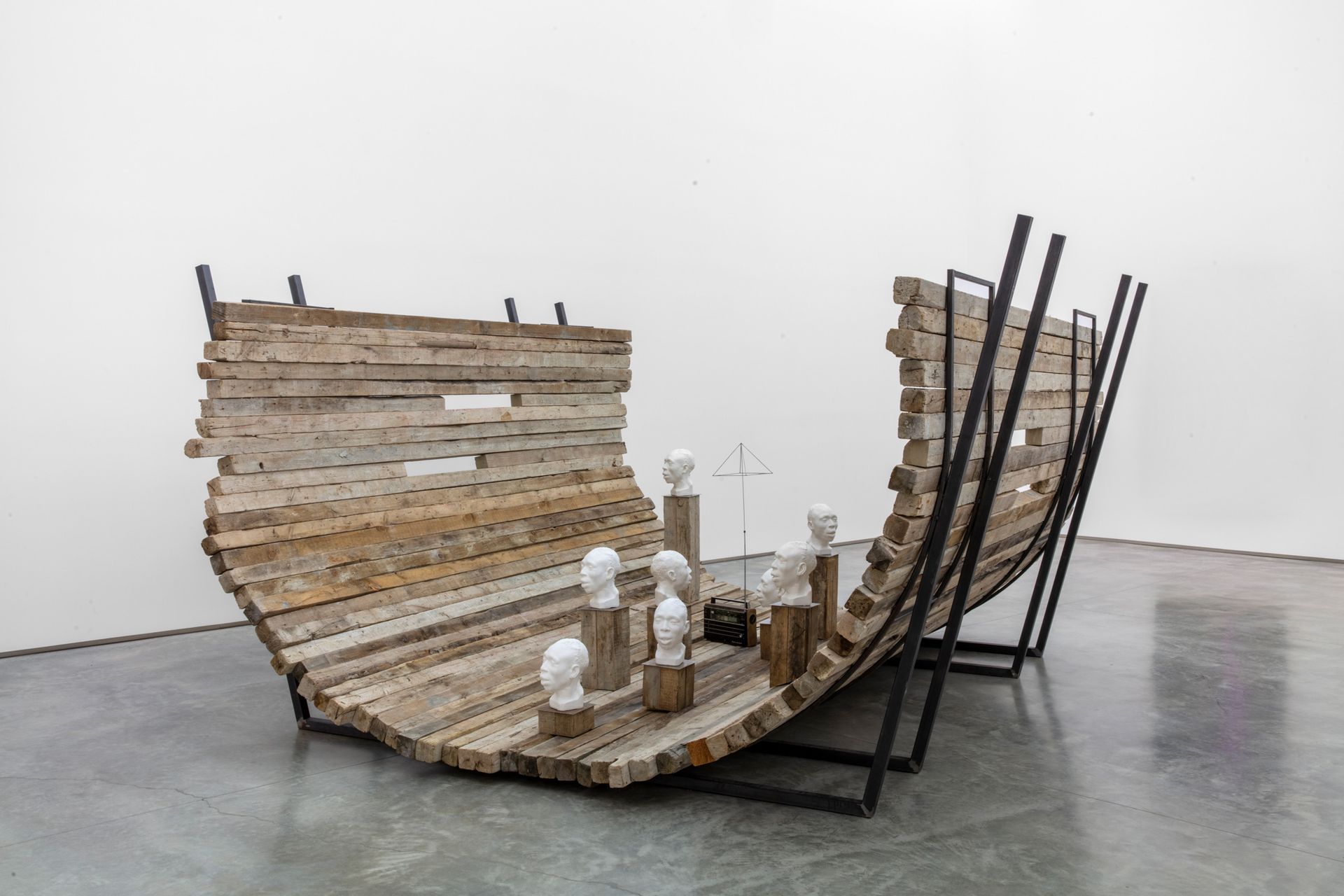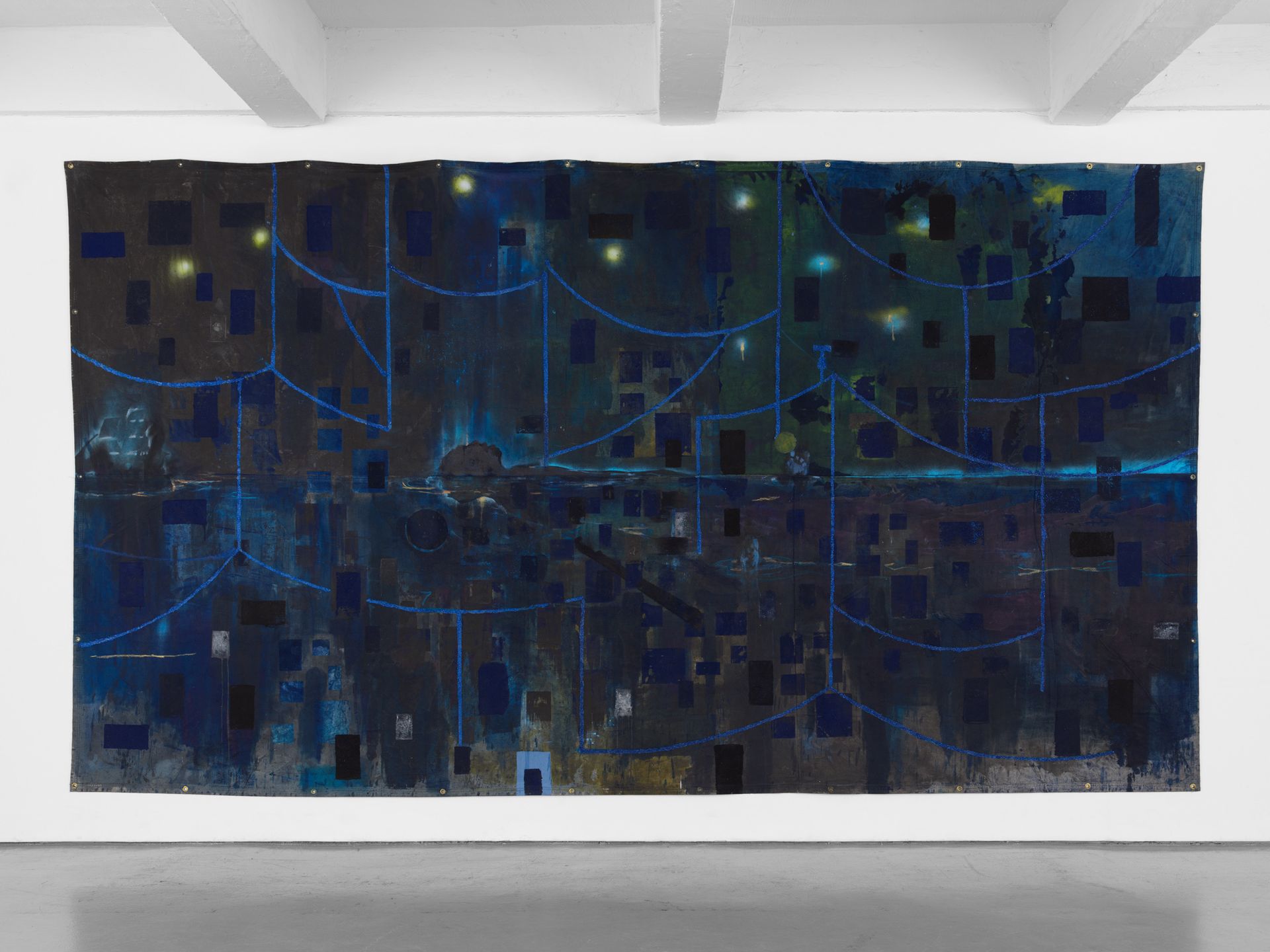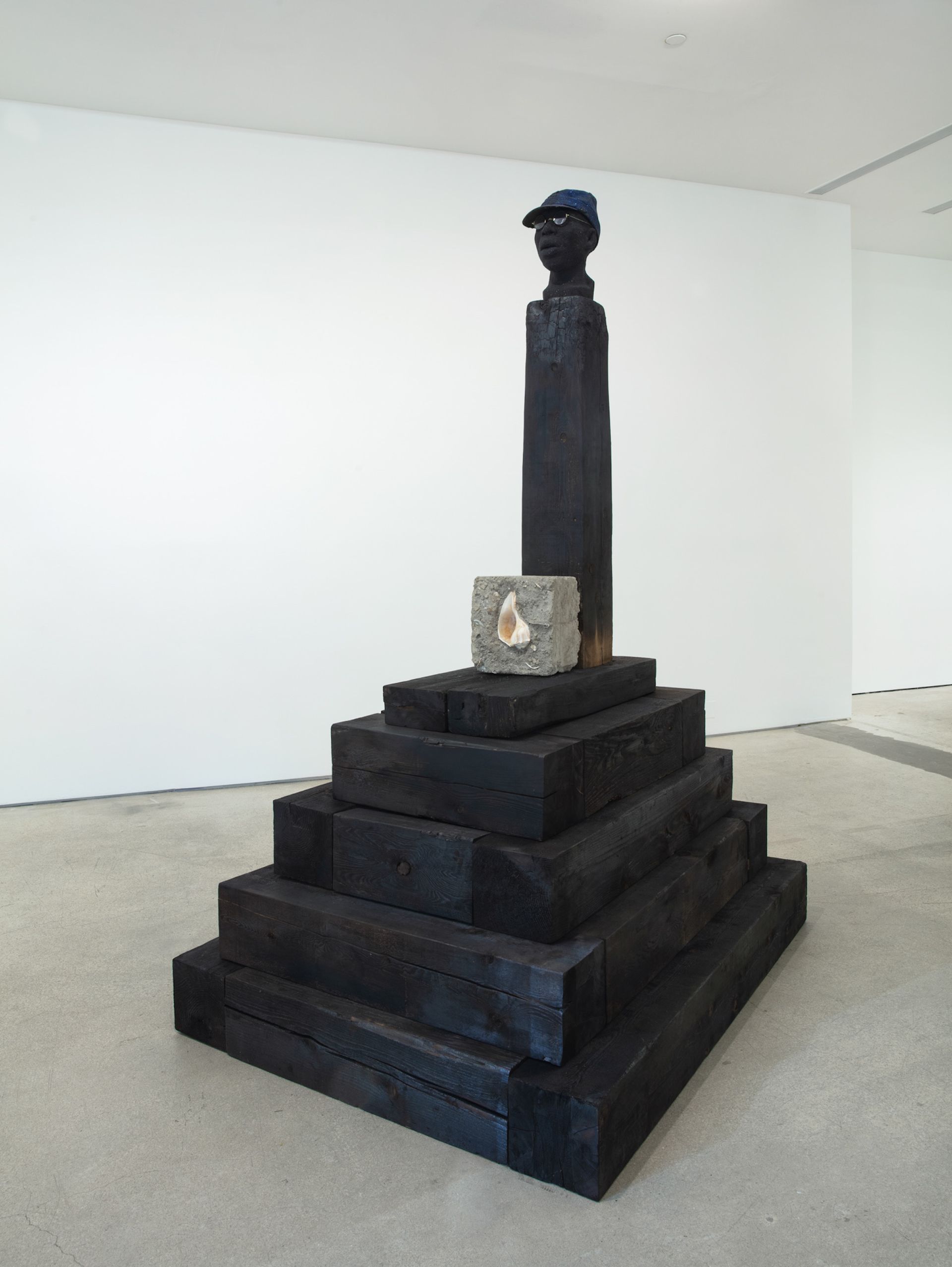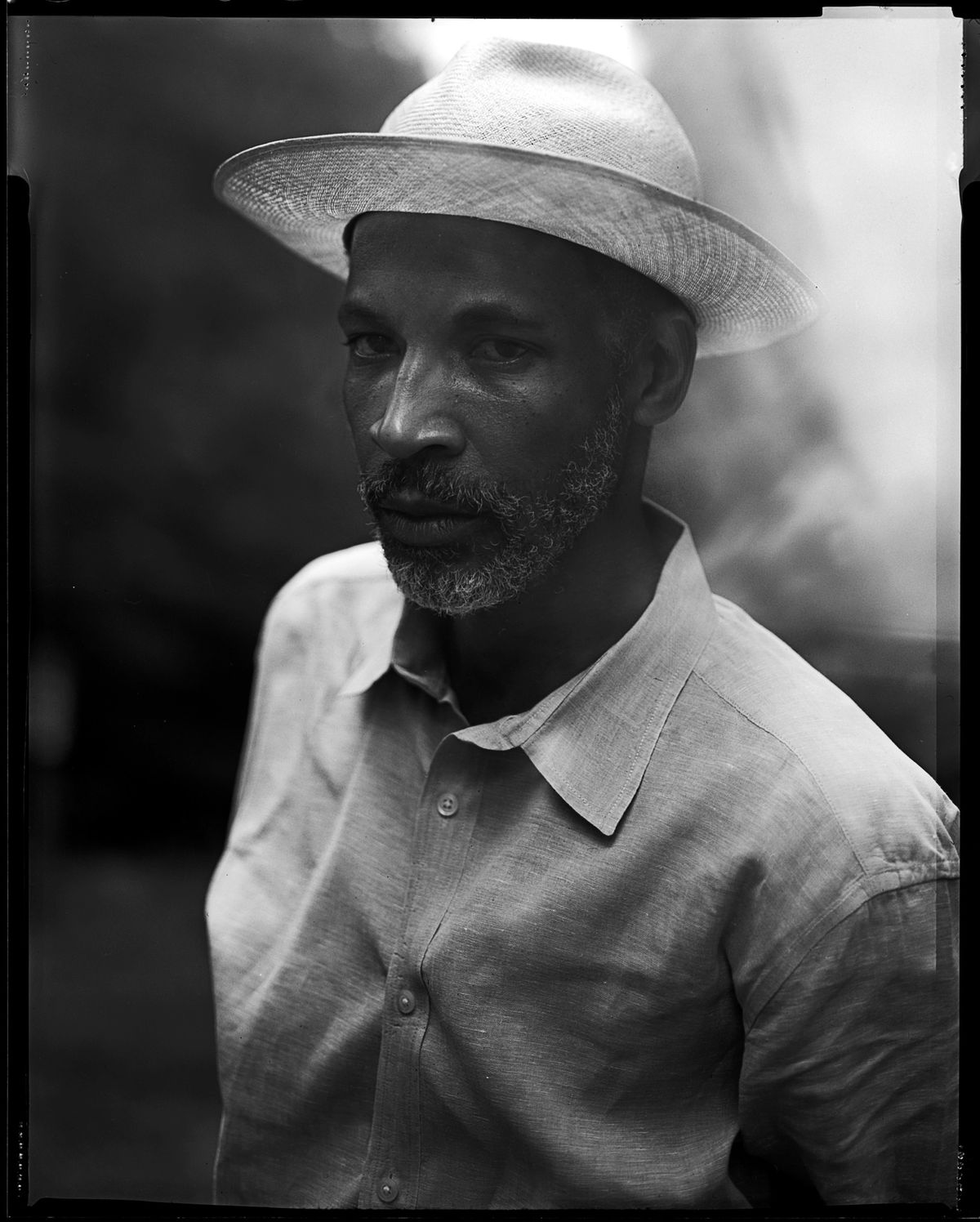Radcliffe Bailey, an artist known for using a plethora of materials and processes—many of which were charged with historical, personal and emotional significance—to create a complex body of mixed-media works that largely explored the African diaspora and Black American history and experience, has died. Bailey’s death was confirmed by his gallery, Jack Shainman, and his brother Roy confirmed that the cause of death was brain cancer. Bailey was 55 years old.
Bailey was born in New Jersey in 1968, but his family relocated to Atlanta when he was just 4 years old. Bailey’s family found themselves in Atlanta by chance—they had been on a road trip to Florida when they stopped at a restaurant in which they met Lucius M. Tobin, a former teacher of Martin Luther King Jr., who gave Bailey’s family a tour of the city. A few weeks later, Reverend Tobin’s wife was in New Jersey helping the Bailey family pack for their move.

Radcliffe Bailey, Nommo, 2019 Courtesy the artist and Jack Shainman Gallery, New York
Bailey spent the rest of his life in Atlanta, a city that celebrated and nurtured his career with prominent commissions as well as a major 2011 survey of his work at the High Museum of Art. In 2011, High Museum curator Michael Rooks told The New York Times that Bailey was “probably the most prominent living artist here in Atlanta”. This survey, Radcliffe Bailey: Memory as Medicine, traveled to the Davis Museum and Cultural Center at Wellesley College and the McNay Art Museum in San Antonio.
Bailey’s father was a railroad engineer and his mother was a history buff and a schoolteacher by trade, and traces of both parents are found in Bailey’s work, whether through the profundity of craftsmanship and material or in the honoring of its historical charge and significance. “Both sides of my family came from Virginia, then, through the Underground Railroad, settled in New Jersey, where I was born,” Bailey told ArtNews earlier this year. “In a way everything is based around my mom,” he continued, “whenever we went camping, or on a trip, my dad would take us fishing, but my mom, she wanted the history, she wanted to discover everything, to learn everything and pass it on.”

Radcliffe Bailey, Night Float, 2022 Courtesy the artist and Jack Shainman Gallery, New York
Growing up in Georgia’s state capital, Bailey showed an early interest in art while also pursuing a dogged love for baseball, and after a year of playing the sport semi-professionally he decided to pivot and enroll in Atlanta College of Art, where he majored in sculpture. In 1991, shortly before graduating from university, he received a gift from his grandmother of roughly 400 tintype photographs from a family album that dated back to the late 1800s. Throughout the 1990s, Bailey began to gain recognition for a series of assemblage-like paintings that used these tintypes as the focal points from which other imagery would radiated.
In 1998, Bailey began working with Jack Shainman Gallery in New York, the gallery that has continued to represent him ever since. He had his first solo exhibition with the gallery in 1999; his most recent was in late 2021.

Radcliffe Bailey, To Be Titled, 2021 Courtesy the artist and Jack Shainman Gallery, New York
Bailey’s work shifted back and forth throughout his career between painting and large sculpture and installation work. Constant across all media was the thread of the unyielding power and history contained in objects, and the dialogue that emerges when they are placed in concert with one another.
“It’s very much like hip-hop, patching and putting things together quilt-like, using old things to make new things,” he told The New York Times in 2011. “I always come to painting as a sculptor,” he added, “everything is based on materials.”


